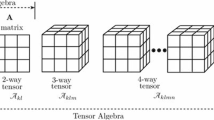Abstract
With the advent of Internet of things, the number of mobile, and embedded, wearable devices are on the rising nowadays, which make us increasingly faced with the limitations of traditional network security control. Hence, accurately identifying different wireless devices through hybrid information processing method for the Internet of things becomes very important today. To this problem, we design, implement, and evaluate a robust algorithm to identify the wireless device with fingerprint features through integral envelope and Hilbert transform theory based PCA analysis algorithm. Integral envelope theory and Hilbert transform theory was used respectively to process the signals first, then the principal component features can be extracted by PCA analysis algorithm. At last, gray relation classifier was used to identify the signals. We experimentally demonstrate the effectiveness of the proposed algorithm to differentiat between 10 numbers of wireless device with the accuracy in excess of 99%. The approach itself is general and will work with any wireless devices’ recognition.





Similar content being viewed by others
References
Liu S, Lu M, Liu G, Zheng P (2017) A Novel Distance Metric: Generalized Relative Entropy. Entropy 19(6):269
Liu S, Zhang Z, Qi L, Ma M (2016) Multimedia Tools and Applications, 75, (23), 15525–15536
Lin Y, Wang C, Chunguang M, Zheng D, Xuefei M (2016) A new combination method for multisensor conflict information[J]. J Supercomput 1:1–17
Liu S, Forrest J, Yang Y (2012) A brief introduction to grey systems theory. Grey Systems: Theory and Application 2(2):89–104
Lin Y, Wang C, Wang J, Zheng D (2017) A Novel Dynamic Spectrum Access Framework Based on Reinforcement Learning for Cognitive Radio Sensor Networks[J]. Sensors 16(10):1–22
Ying Y, Li J, Chen Z, Guo J (2017) Study on rolling bearing on-line reliability analysis based on vibration information processing. Comput Electr Eng. https://doi.org/10.1016/j.compeleceng.2017.11.029
Deng JL (1988) Grey System. China Ocean Press, Beijing
Wang Q (1989) The Grey Relational Analysis of B-Mode. Journal of Huazhong Universtiy of Science and Tenchnology 6:77–82
Zhenguo Mei (1992) The Concept and Computation Method of Grey Absolute Correlation Degree, Systems Engineering, Vole.5, pp.43–44+72
Wuxiang T (1995) The Concept and the Computation Method of T’s Correlation Degree. Application of Statistics and Management 1:34–37+33
Yaoguo D (1994) The Research of Grey Slope Relational Grade. System Sciences and comprehensive Studies In Agriculture, Supplement 10:331–337
Yugang S, Yaoguo D (2007) The Improved Model of Grey Slope Relational Grade. Statistics and Decision 15:12–13
Wang Q, Guo L (2005) Generalized Relational Analysis Method. Journal of Huazhong Unversity of Science and Technology (Natural Science Edition) 8:97–99
Shoaling Z (1996) Comparison between Computation Models of Grey Interconnect Degree and Analysis on Their Shourages. Syst Eng 3:45–49
Xuequan L (1995) Research On the Computation Model of Grey Interconnect Degree. Syst Eng 6:58–61
Mingliang L (1998) A New Descrimiant Byelaw for Grey Interconnect Degree and Its Calculation Formulas. Syst Eng 1:68–70+61
Lu F, Xiang L, Quan L (2000) The Theory of Gray Relative Analysis and It’s New Research. Journal of Wuhan university of technology 2:41–43+47
Naixiang S, Dong T, Zheng S (1992) On Several Theoretical Problems of Grey Correlation Degree. Syst Eng 6:23–26
Liang HY, Zonghai C (2003) The Inconsistent Problems in the Grey Relational Theory. Systems Engineering –Theory & Practice 8:118–121
Bose GK: “Selecting significant process parameters of ecg process using Fuzzy-MCDM technique,” International Journal of Materials Forming and Machining Processes (IJMFMP), 2, pp. 38-53(2015)
Ying Y, Cao Y, Li S, Li J, Guo J (2016) Study on gas turbine engine fault diagnostic approach with a hybrid of gray relation theory and gas-path analysis. Advances in Mechanical Engineering 8(1):1–14
Hsu PF, Lin EP (2016) Tsai C W. Optimal Selection of Business Managers for Integrated Marketing Communications Companies Using AHP and GRA. International Journal of Customer Relationship Marketing and Management (IJCRMM) 7:16–29
Chaoyang F, Zheng J, Zhao J (2001) Application of Grey Relational Analysis for Corrosion Failure of Oil Tubes. Corros Sci:881–889
Abhang LB, Hameedullah M (2012) Response surface modeling and grey relational analysis to optimize turning parameters with multiple performance characteristics. Internaional journal of manufacturing, materials 2:12–45
Otero AR, Ejnioui A, Otero CE, Tejay G (2011) Evaluation of information security controls in organizations by grey relational analysis. International Journal of Dependable and Trustworthy Information Systems (IJDTIS) 2:36–54
Xu-bo L, XI-cai S, Man-jun L, Zhi-fu C (2010) Quick estimation to parameters of LPI radar-signals based on integral-envelope [J]. Systems Engineering and Electronics 10:2031–2035
Peng K, Zhang M, Li Q, et al (2016) Fiber optic perimeter detection based on principal component analysis[C]//Optical Communications and Networks (ICOCN), 2016 15th International Conference on. IEEE, 1–3
Zou H, Hastie T, Tibshirani R (2006) Sparse Principal Component Analysis[C]// British Machine Vision Conference 2006, Edinburgh, Uk, September. DBLP, 377–386
Deng J (2002) The Basic Method of Grey System Theory. Huazhong Unversity of Science and Technology Press, Wuhan
Acknowledgments
This research is supported by the National Natural Science Foundation of China (No. 61603239) and (No. 61601281).
Author information
Authors and Affiliations
Corresponding author
Rights and permissions
About this article
Cite this article
Han, H., Li, J. & Chen, X. The Individual Identification Method of Wireless Device Based on A Robust Dimensionality Reduction Model of Hybrid Feature Information. Mobile Netw Appl 23, 709–716 (2018). https://doi.org/10.1007/s11036-018-1003-5
Published:
Issue Date:
DOI: https://doi.org/10.1007/s11036-018-1003-5




